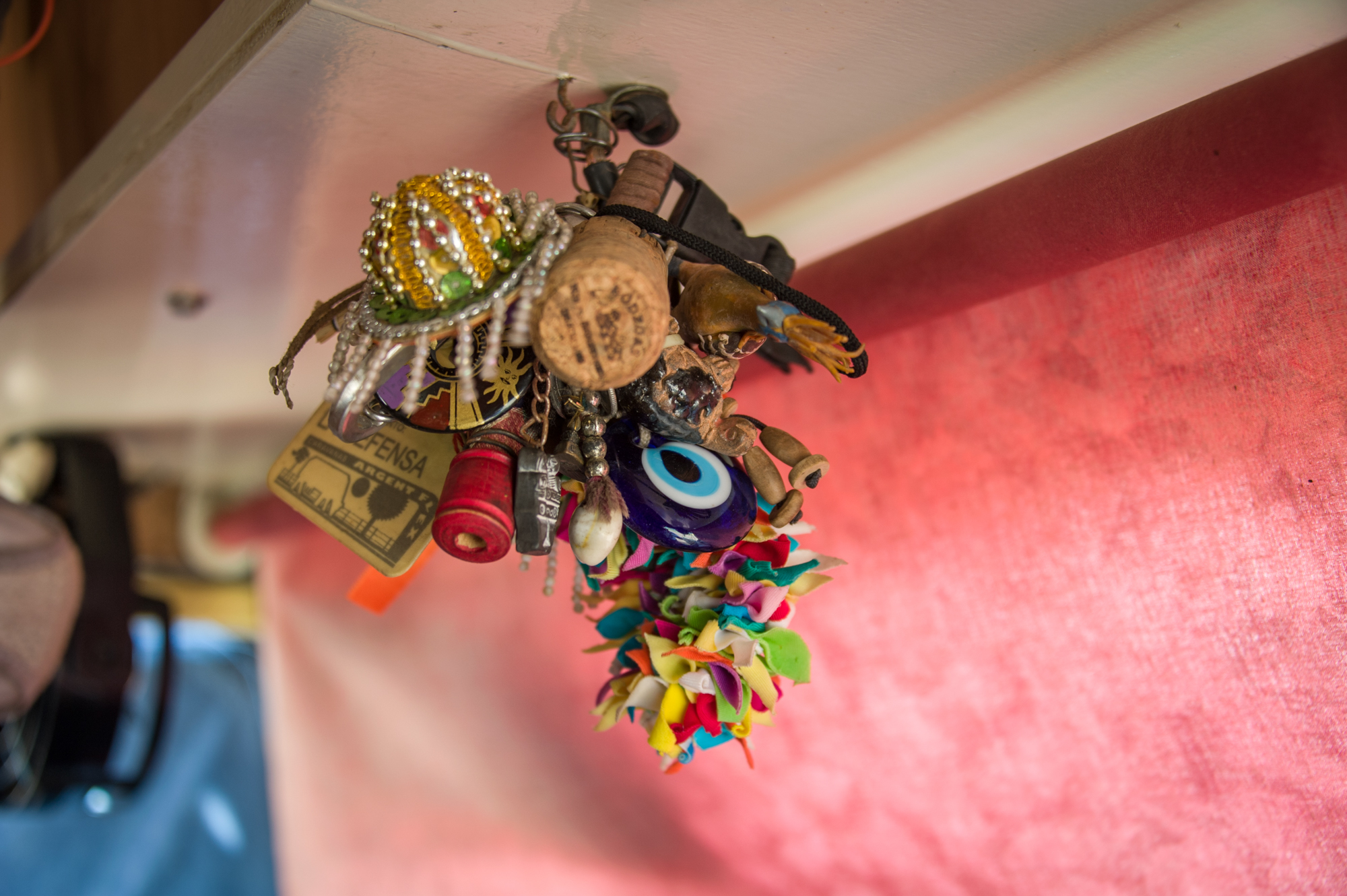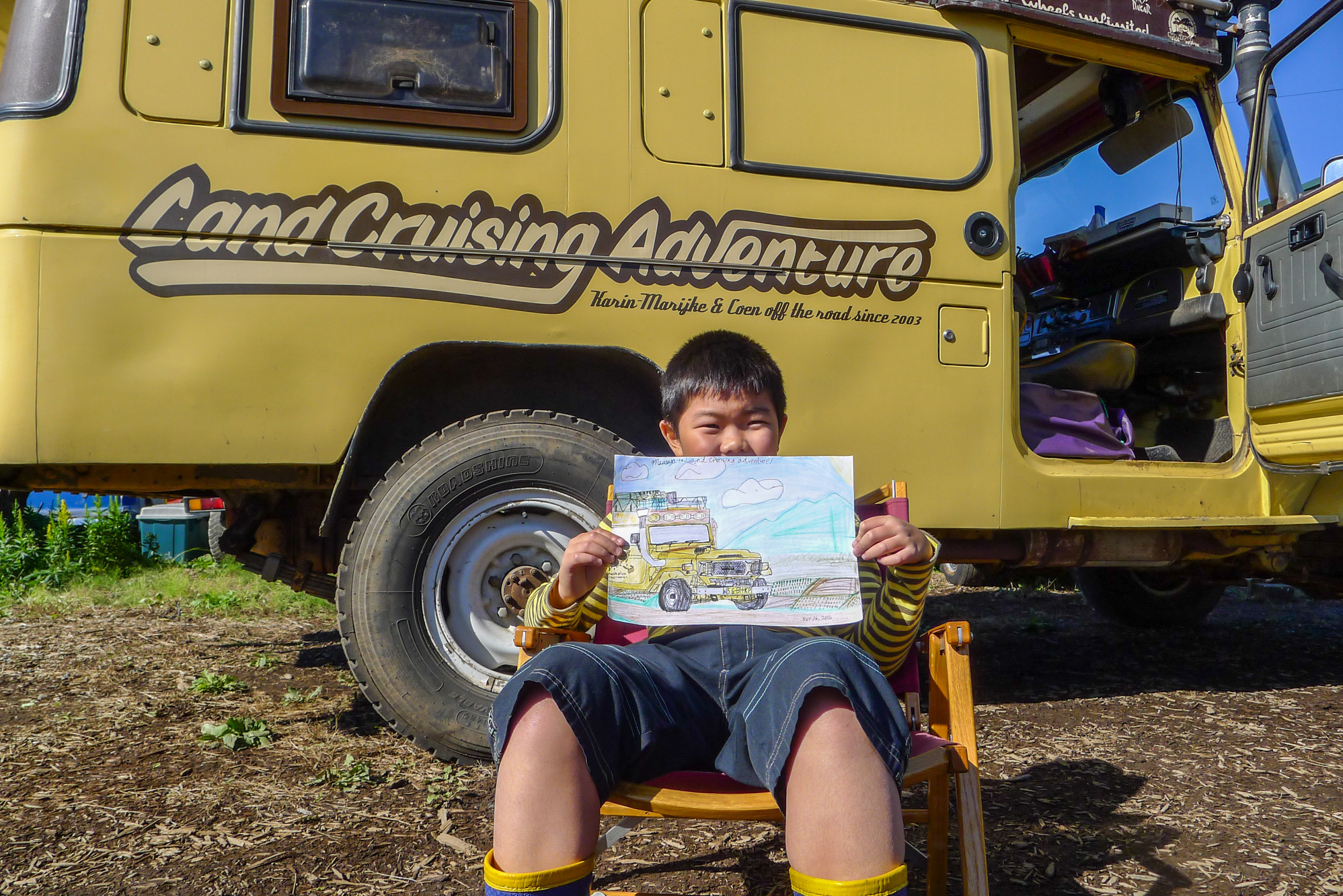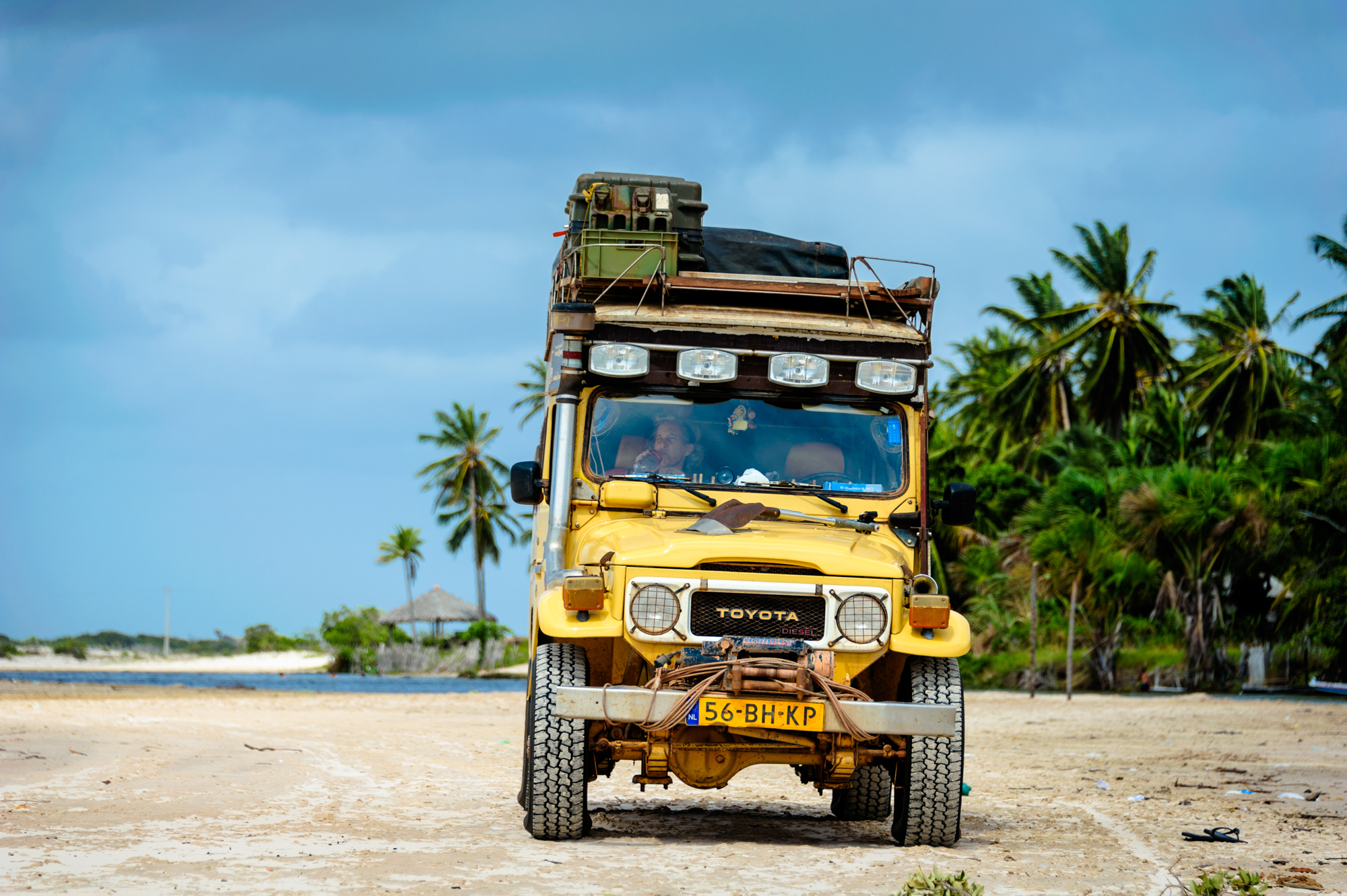On a chilly morning in January, Coen and I drove 430 miles to Germany. There in a driveway stood a dirty, dilapidated truck. It radiated pride as well as loneliness and coldness, like a house that has stood empty for too long. The Land Cruiser was covered in rust and the interior was damp, caused by a leak somewhere. The tires were worn, the lights didn’t work, and there was a hole in the wiper reservoir. There was play in the steering wheel and it needed stiffer suspension. It didn’t matter; this was going to be our home on wheels. It was love at first sight.
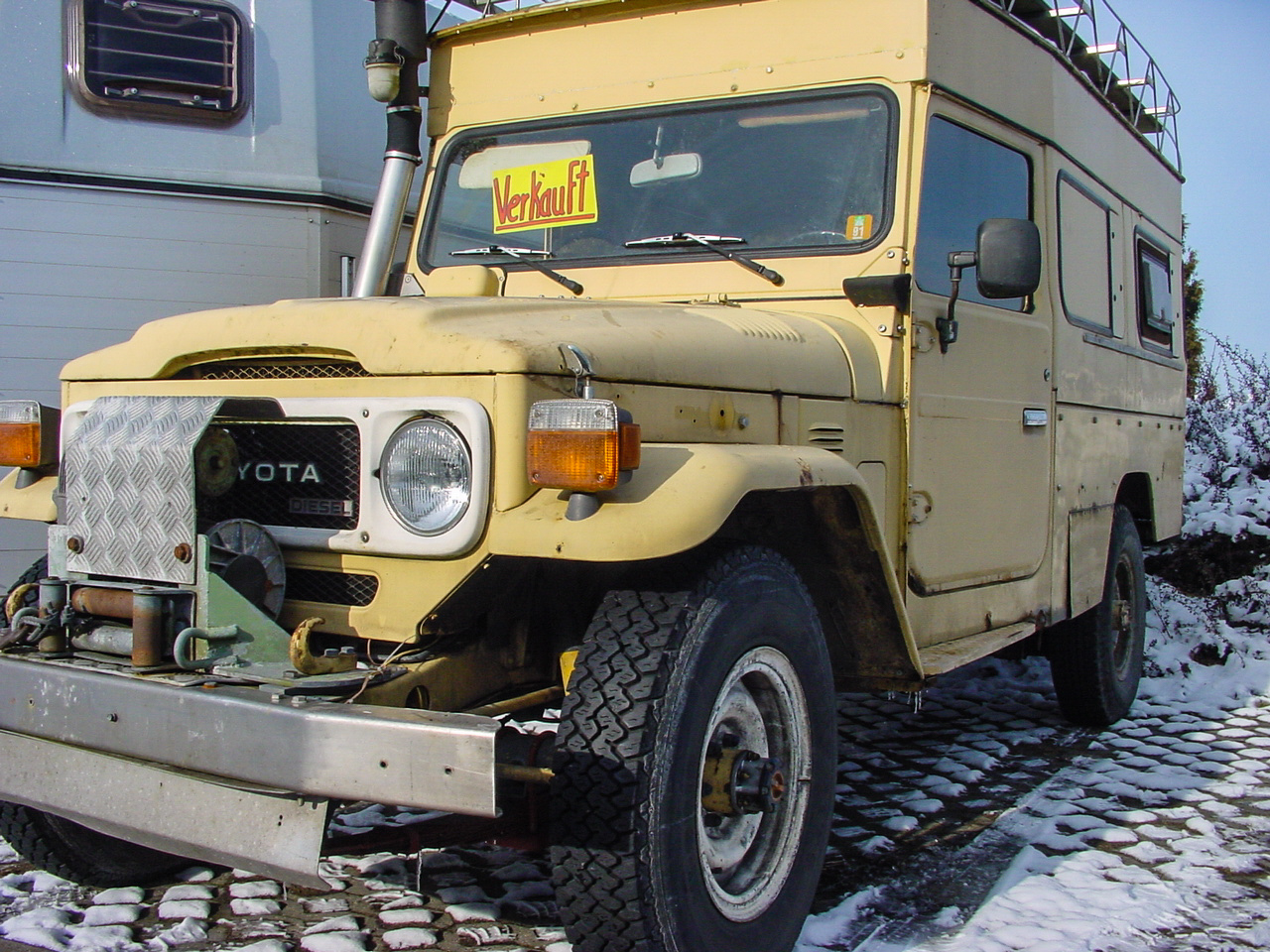
The engine had not run that day and to demonstrate its reliability, Andreas, the dealer, preheated it and fired it up. It ran beautifully, the old diesel engine emitting a low, pleasant rumble. We paid a mere 5,700 euros and became the proud owners of a 1984 Toyota Land Cruiser BJ45. Four months later we hit the road with the idea of driving from the Netherlands to Southeast Asia in a year or two, after which we’d return to our old lives. Little did we know we had started a nomadic existence that continues today, 15 years later.
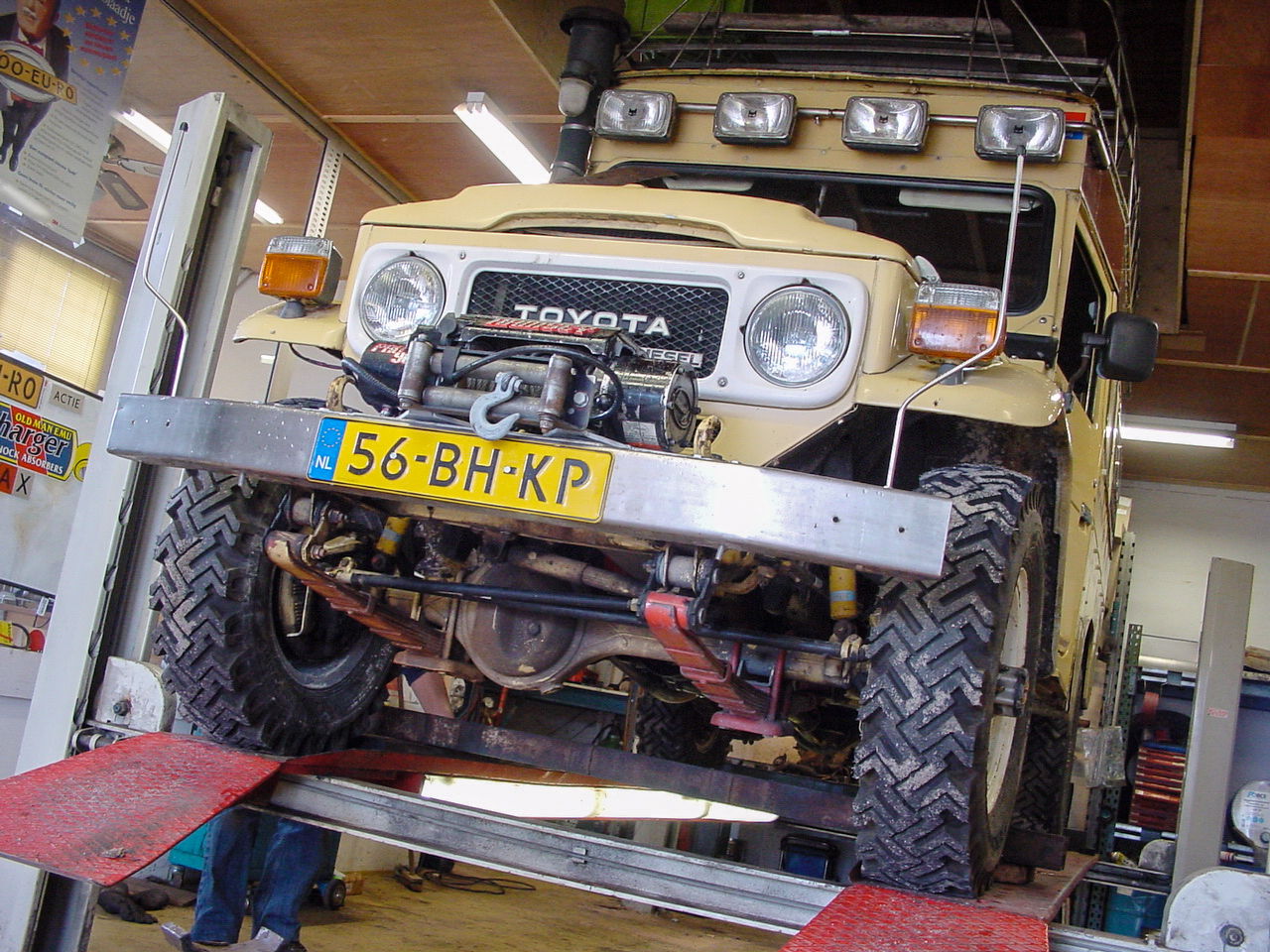
“Why don’t you buy another rig?” is one of the most frequently asked questions we get when people see how rusted the car is, or when the Land Cruiser is, once more, in a workshop. When the car breaks down Coen sighs or curses. My response is often that something good may come of it. And this has often been the case, in spite of the many headaches the Land Cruiser has given us. One thing is certain: you definitely don’t need a fancy, expensive 4WD to have fantastic adventures throughout the world.
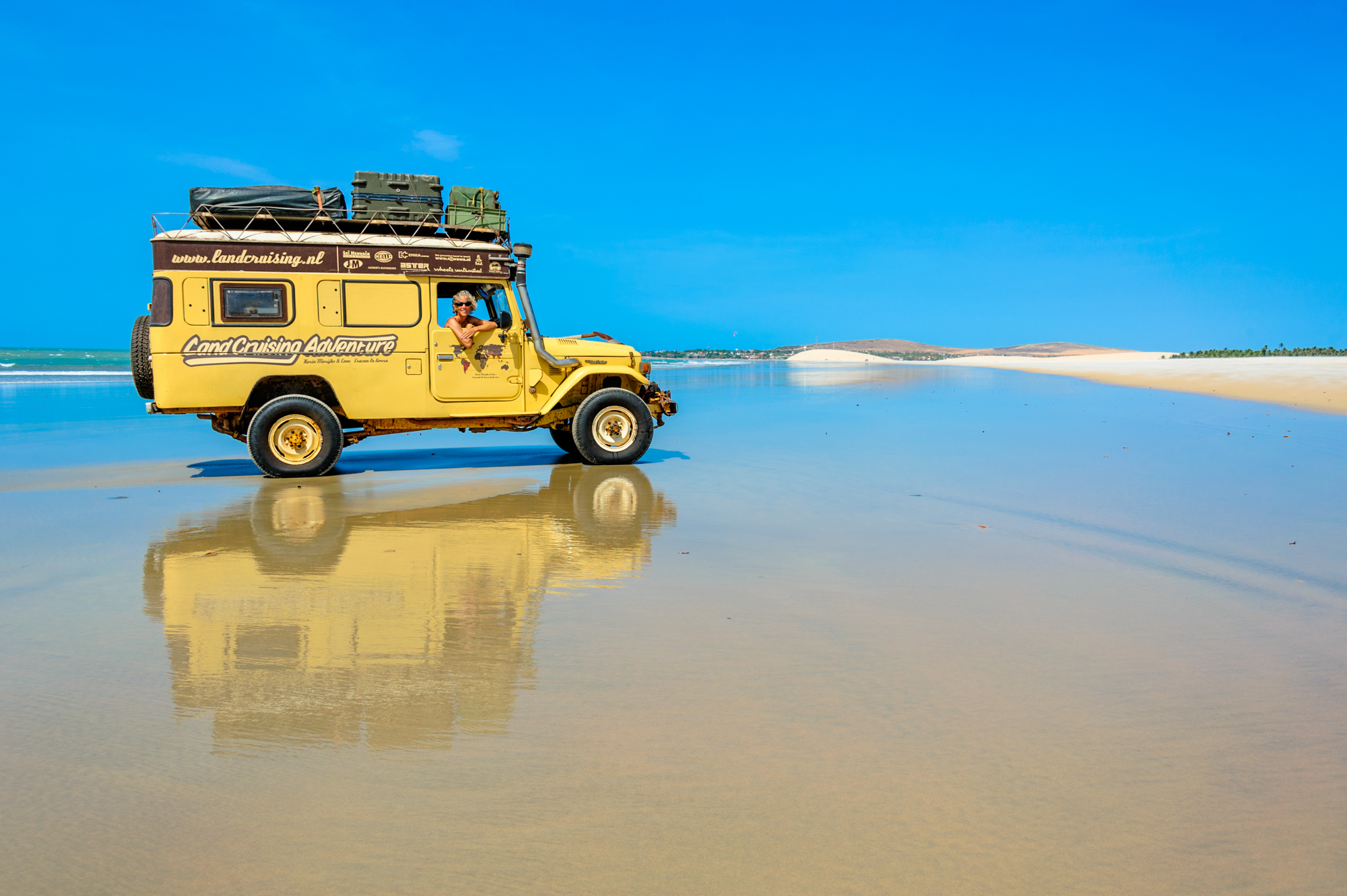
By no means am I saying that overlanding in an old vehicle is the only way to go. On the contrary. We all have our reasons for choosing one rig over another; old or new, conspicuous or inconspicuous, cheap or expensive, big or small. A minimal budget and love at first sight is what got us going with this Land Cruiser. We had no clue how it would enrich our travels.
Car Trouble and Making Friends
Coen’s worries mostly occur before the actual repair takes place, with questions running amok in his head, “How are we going to fix this? Where will we find people who can help us?” Once in the workshop and having changed into his overalls, Coen quickly enjoys himself. He learns from the mechanics who help him, and in return, lends them a hand when needed. Mechanics may take him for lunch or the day ends with a barbecue. Sometimes the work takes longer than a day and we camp in workshops. A Toyota dealer in India gave us the keys to the showroom so we could watch TV in the evening among brand-new Prados. In Bogotá, we could not leave or enter the workshop after 10:00 p.m. because the alarm was set, while in Quito, the alarm was supposed to be off but wasn’t. When we walked to a sink to brush our teeth we were scared out of our wits by the noise when the alarm went off. Camping in workshops has given us unique adventures.
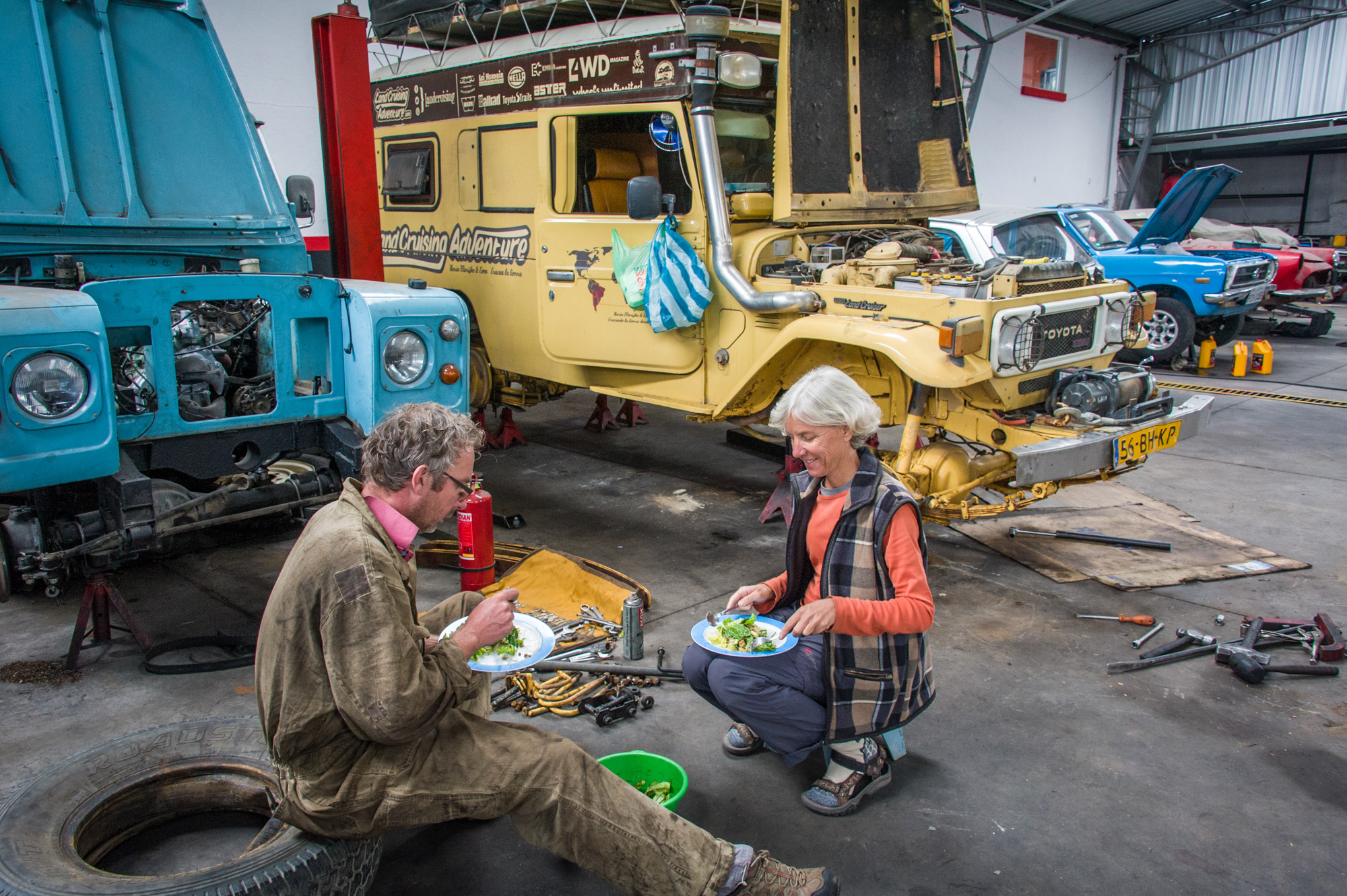
Sometimes I feel, as do followers of our journey, as if Coen is “forever” working on the Land Cruiser. I got a better understanding of why that is when we were in the Iguana 4×4 Workshop in Bogotá. Coen needed four days to overhaul the front drive train. Another overlanding couple drove in, handed over their keys, had a similar job done on their vehicle, and could leave that same evening. They spent little time but paid a steep bill, preferring to use their limited time on the road. We, on the other hand, prefer to save on costs and are less worried about time. I have to add, doing it our way is only an option if you enjoy the mechanics of working on vehicles and with other people. Coen’s insatiable curiosity about figuring out how the Land Cruiser works and can be fixed often goes hand in hand with making friends. Like at Iguana 4×4 in Bogotá, where Mauro walked in, a Land Cruiser aficionado who apparently had followed our journey for a long time. “Ah, so here you are. Finally, I meet you and your Land Cruiser. Please come to my house and meet my family.” Mauro’s house became Coen’s home for two weeks, including Christmas, while I flew to the Netherlands for family matters. Mauro and his family have become among our most-treasured friends in South America.
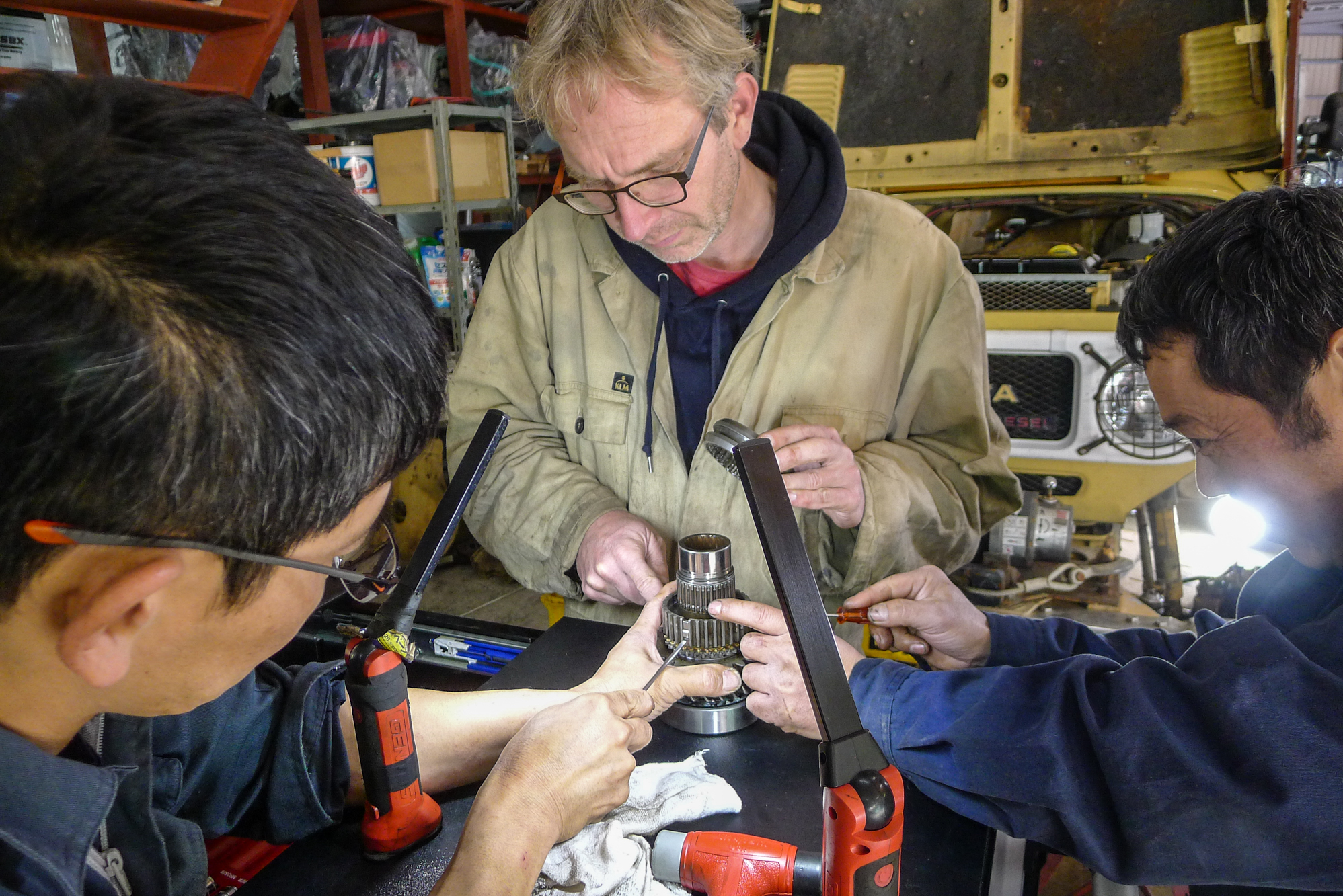
After 10 years on the road, we had grown used to such meetings (although we never take them for granted); the combination of having car trouble and making friends has happened throughout our journey. As in Iran, after some six months of traveling, when the windshield wiper broke down. When we asked around for a workshop, a local, English-speaking man named Reza hopped into the car to help us. To no avail. This tiny little piece of plastic was not to be found. A couple of hours later we were debating our options when our eyes were drawn to the other side of the road where a Land Cruiser like ours was being parked. Reza told us to wait, jumped out of the car and ran across the street. We watched how the owner took his windshield wiper apart and gave the precious little part to us, waving aside our startled thanks. He didn’t even want to be paid for it, nor did the mechanic who installed it. This blew us away. When we wanted to say goodbye, Reza wouldn’t hear of it. He insisted we join him and his family for dinner. An extended family had meanwhile gathered at his home, most of whom spoke English. A wonderful evening followed with an elaborate dinner, meaningful conversations and lots of banter. They insisted we spend the night as well and the next morning we left, having made new friends.
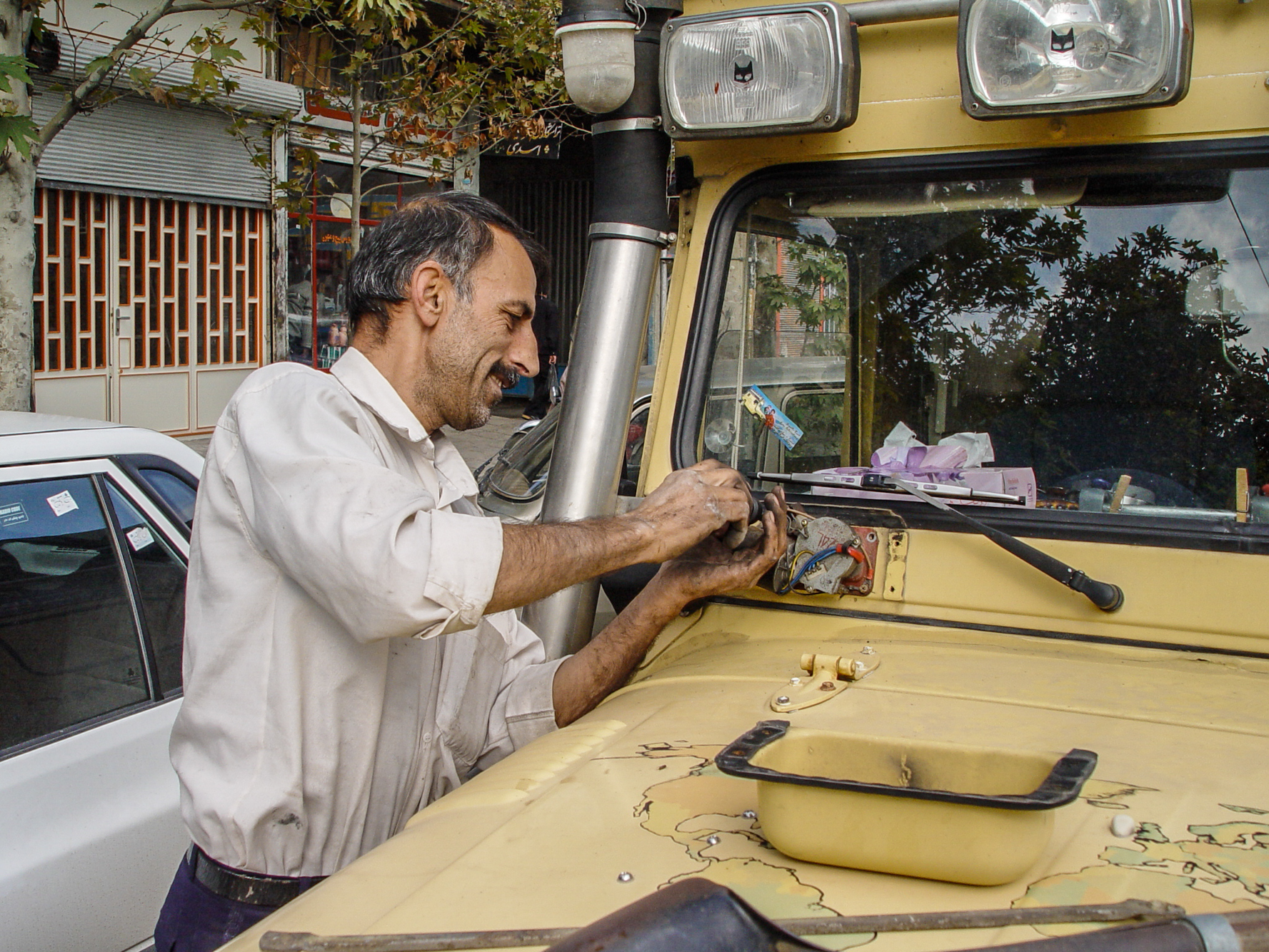
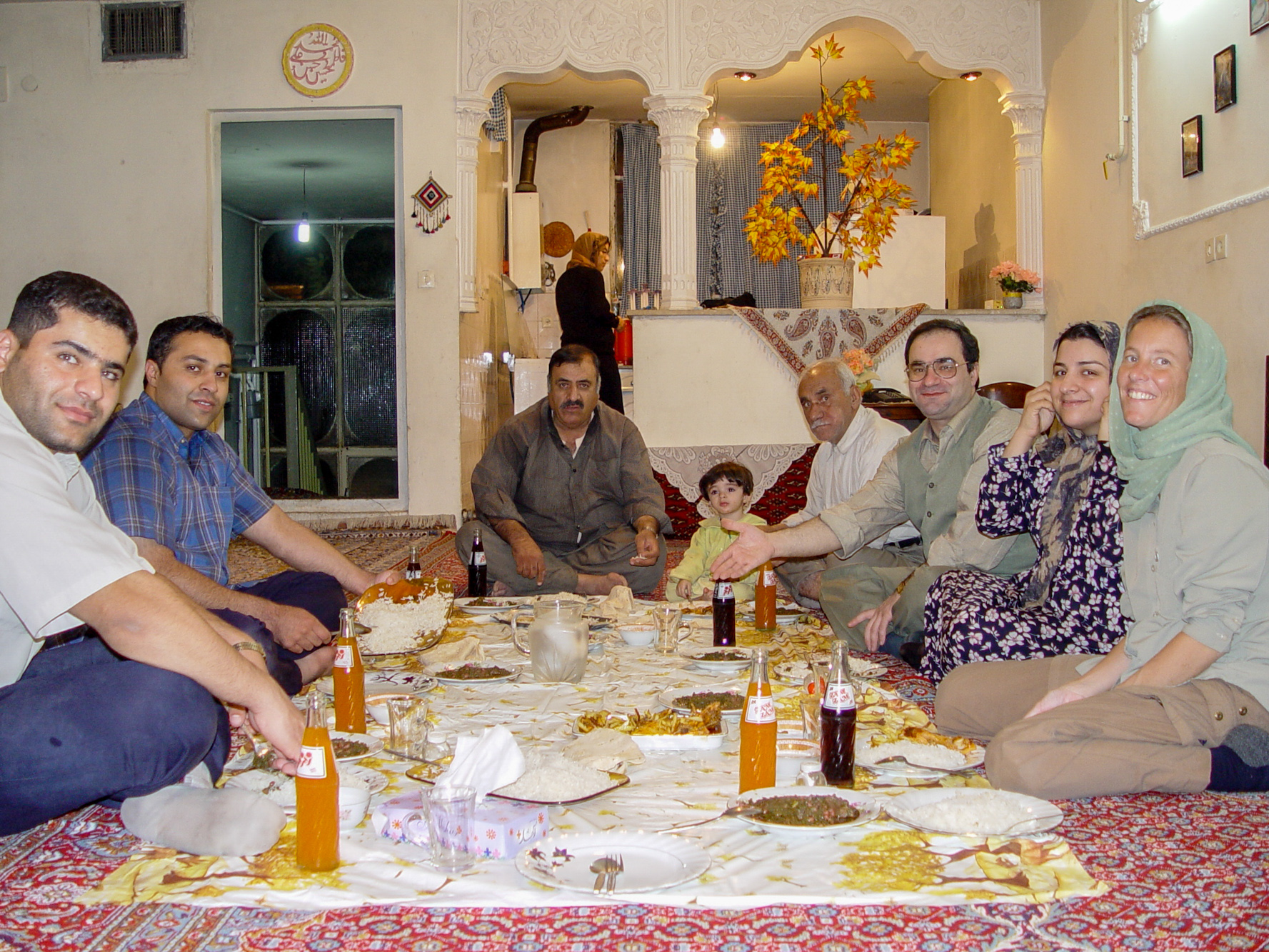
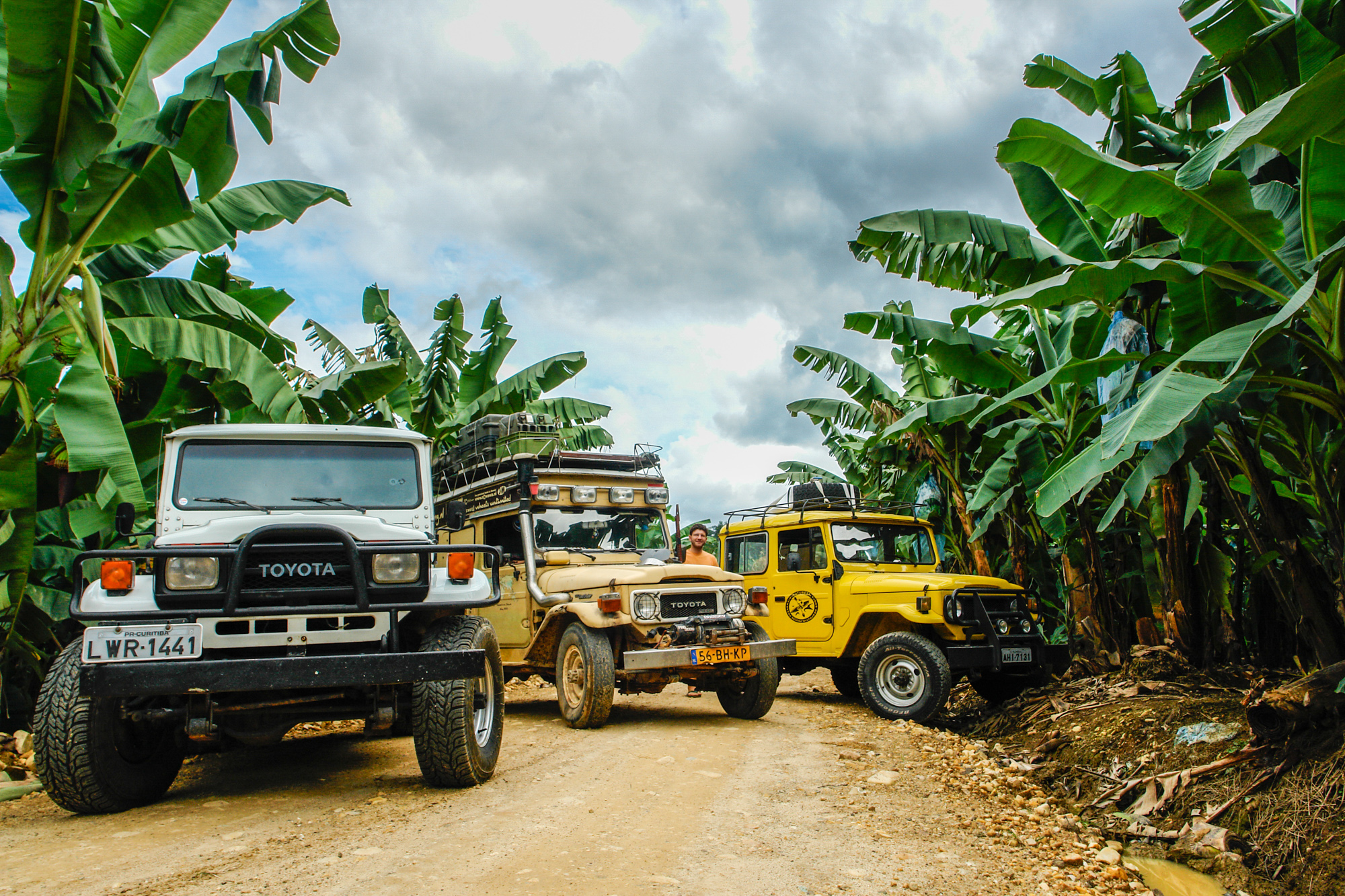
Among the most supportive people have been members of local 4WD clubs. These communities or clubs have been a great way of meeting local people on our overland journey and were often a great source of help when we needed assistance with car repairs. In Brazil, for example, the Land Cruiser has a Brazilian version called the Bandeirante. For that reason, our Land Cruiser drew all the more attention. The local Jeep club (in Brazil “Jeep” is used as a general word for 4WDs) in São Paulo and Salvador da Bahia invited us for a weekend get-together on an island and charity rally. In a similar fashion, the 4WD clubs in Venezuela and Japan have been of tremendous support and led to beautiful friendships.
While an old car arguably breaks down more often than a brand-new one, the friendships that have resulted from these problems have more than compensated for the issues.
A Conspicuous Car and Drawing Attention
You don’t need an old car to meet local people, of course. However, our characteristic Land Cruiser does help. Its size, shape, and general appearance make people stop in their tracks, study the car, and smile. They turn around in their seat while driving or start a conversation when stopping next to us at a traffic light (or even while driving on a double-lane highway). The Land Cruiser radiates a sense of adventure which appeals to many.
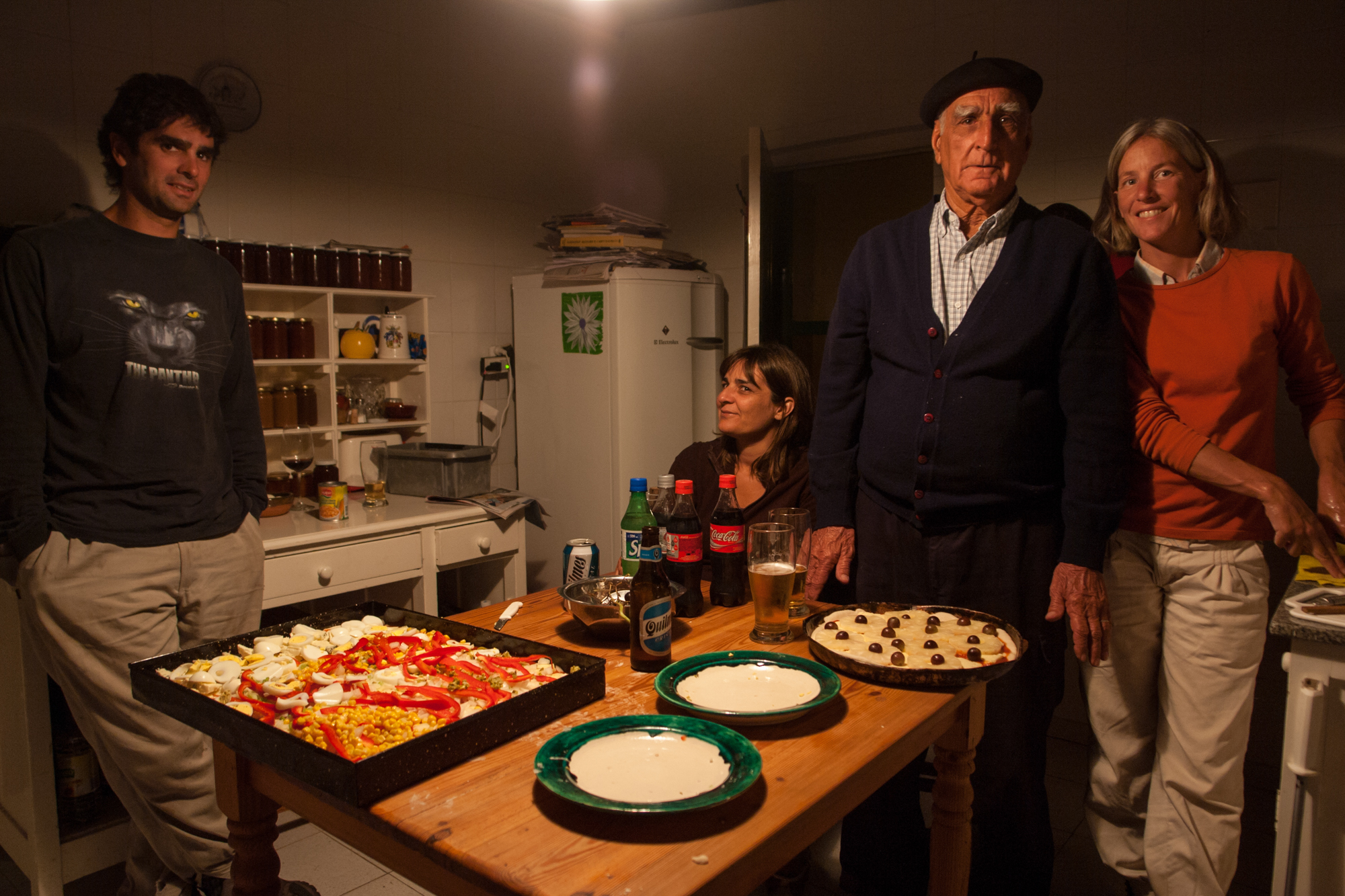
People approach us for a chat, invite us for a meal, or to spend the night at their homes. Among the many friends we have made this way is Rama, who struck up a conversation with Coen while he was waiting in the Land Cruiser as I bought groceries in a town in rural Argentina. “Follow me, I want to cook lunch for you,” he said, and on my return, we followed Rama to his farmhouse on an estancia. The chef cook prepared a delicious criollo casserole of meat, tomatoes, bell peppers, and spices that we enjoyed with a glass of Argentinean Malbec on his veranda. For dessert, he served banana with his homemade dulce de leche. When our bellies had recovered from that feast, Rama took us for a drive in the Sierras Chicas to get a sense of this little-known but gorgeous mountainous landscape. We became good friends, and a year later, returned to live on the estancia for four months when we were in need of a break.

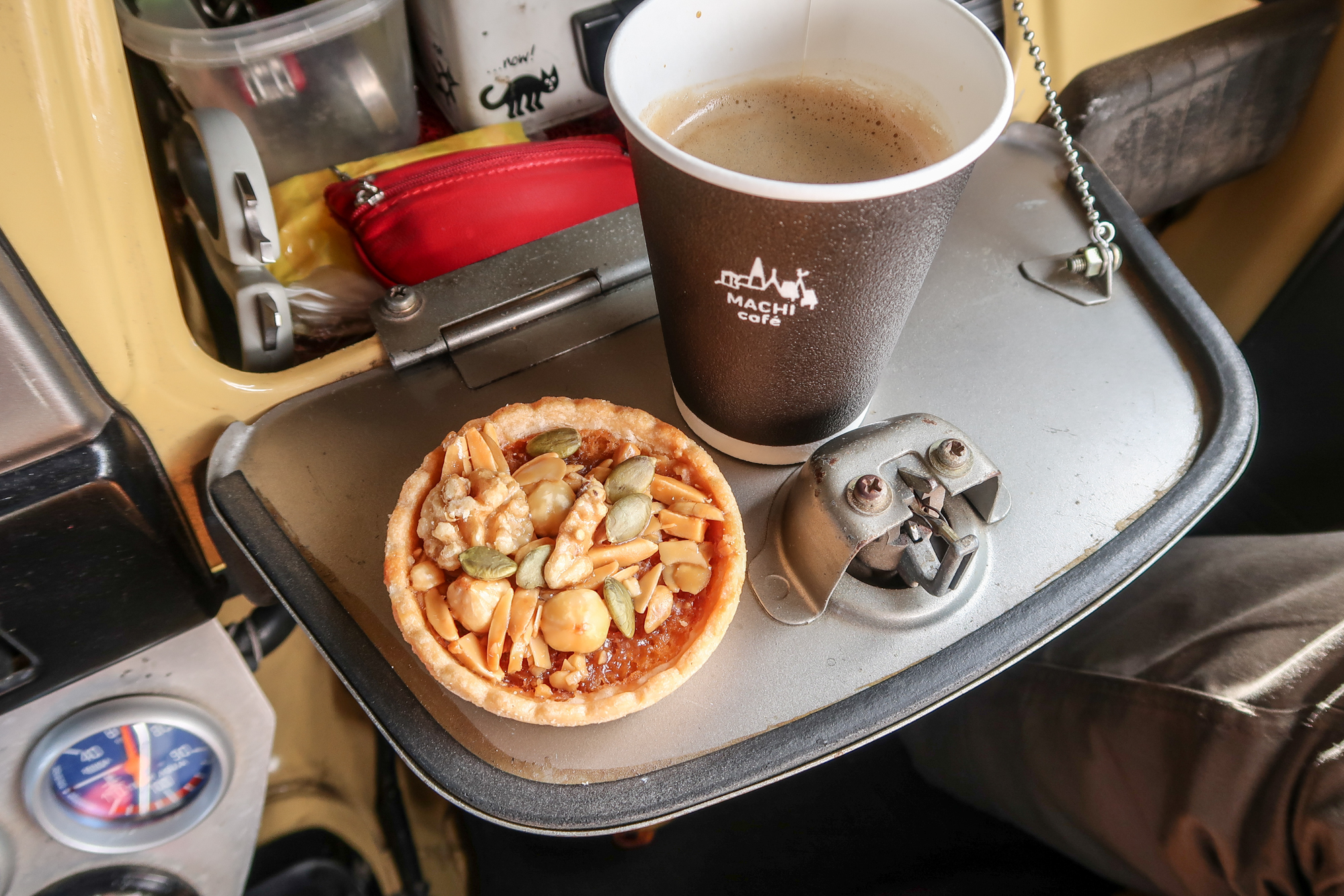
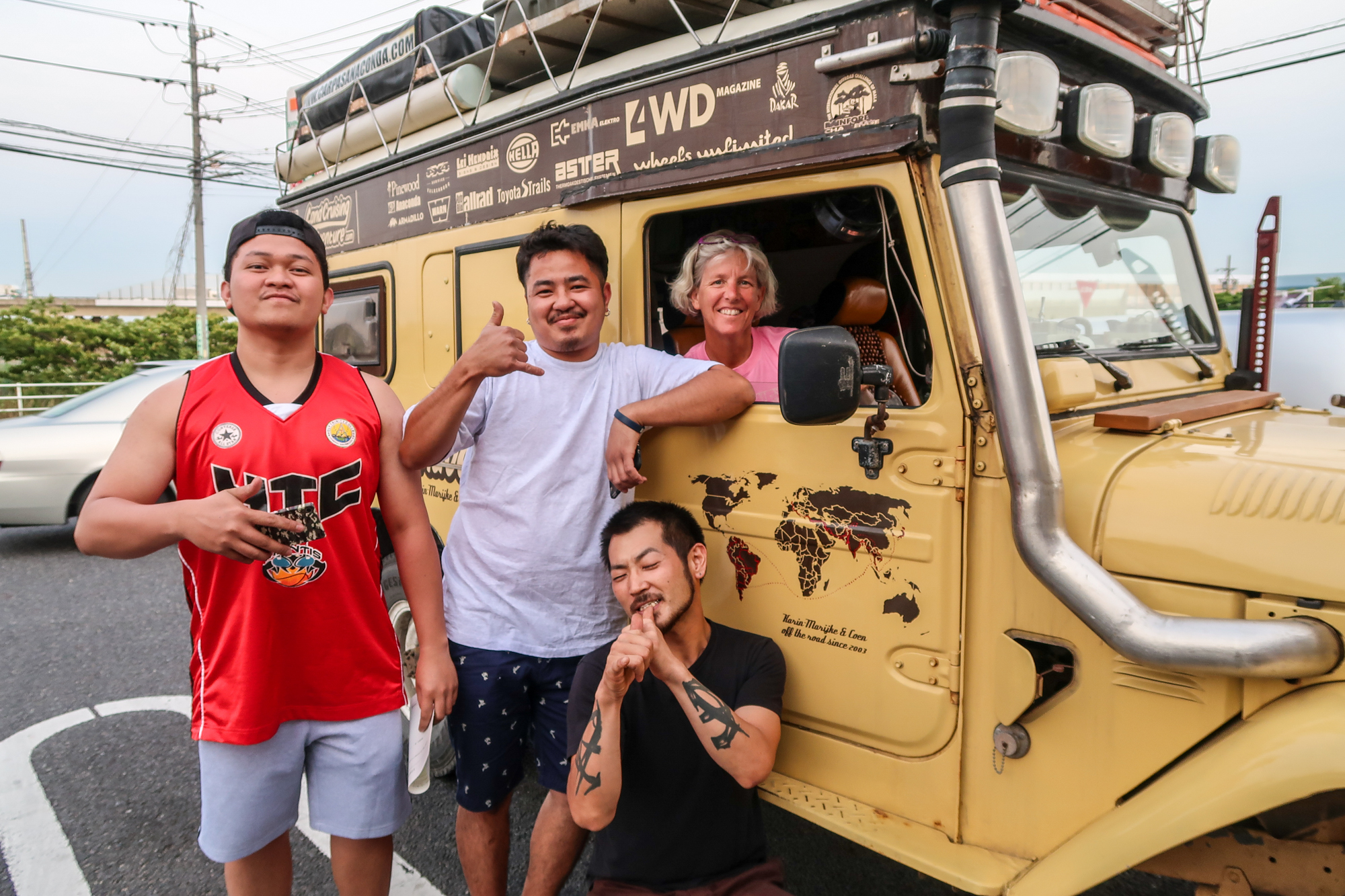
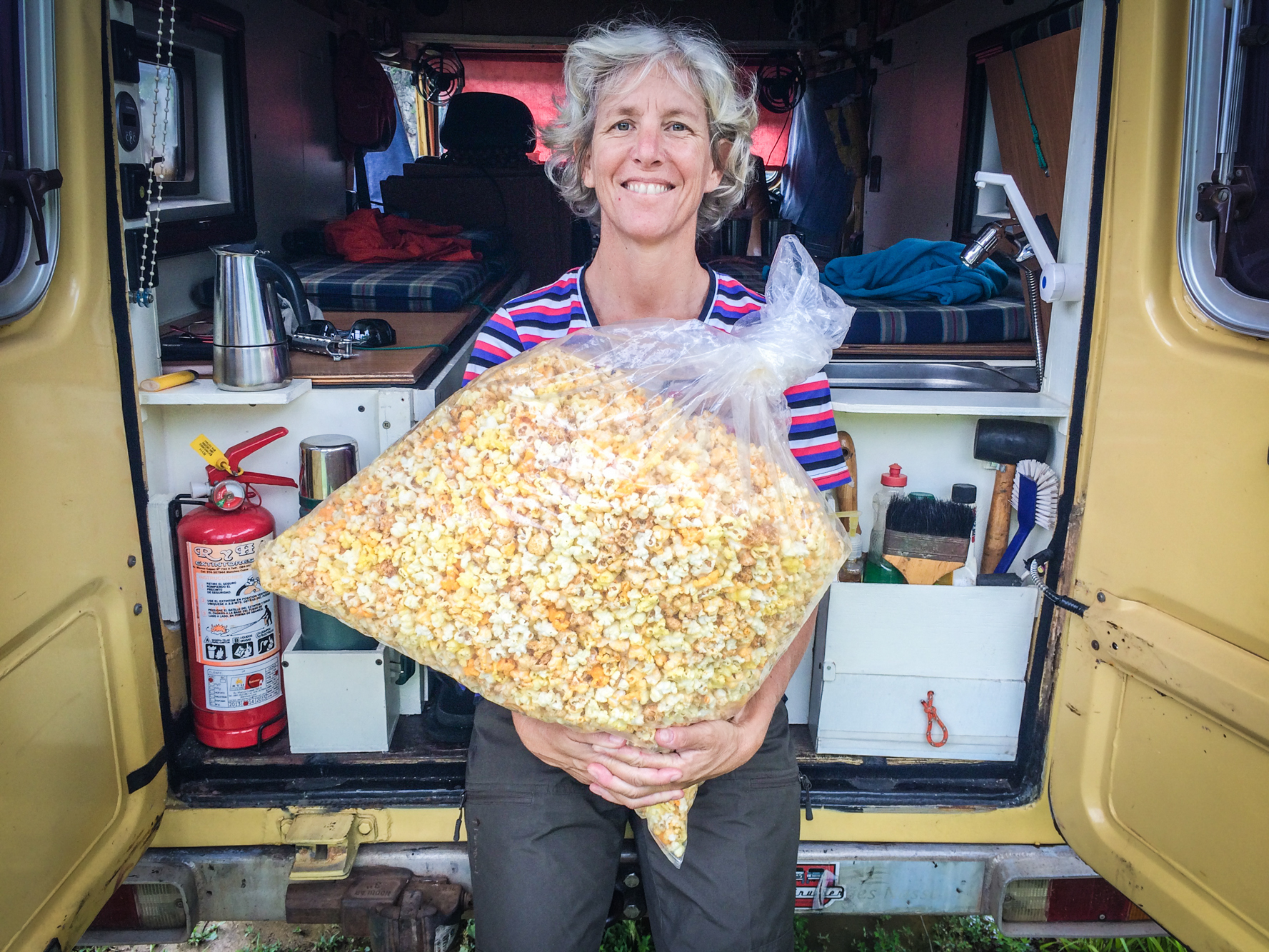
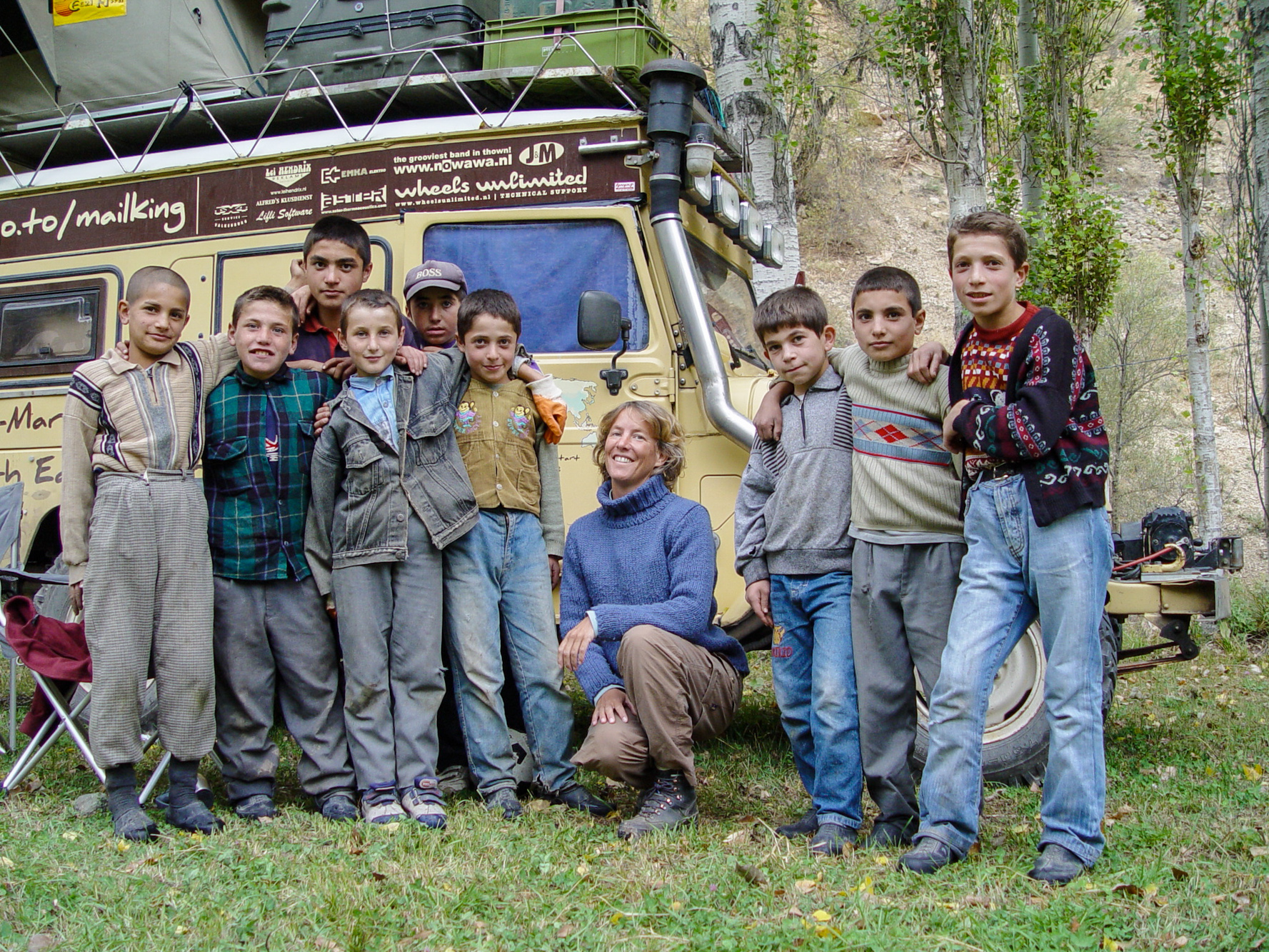
When parked in front of convenience stores in Japan to use the WiFi, locals bought us coffee or a snack and handed it through the open windows with a smile. In South Korea, we were overtaken by a driver using the hazard lights and motioning us to the side. He opened the trunk and handed us two large boxes, one full of packages of dried seaweed, and the other of ramen noodles. “Here you go, a present,” he sign-languaged and drove off. It was Chusock, the Korean Thanksgiving, a holiday when sharing is even more important than usual. Similarly, we got frantic turn signals from a Lincoln Continental on the highway near Brasilia one day: “Follow me.” The driver took us to Brazil’s Veteran Car Club, where aficionados of Dodges, Jaguars, Mustangs, Pumas, and other vintage-car lovers met weekly to talk shop. We joined them for one of their barbecues.
We are aware that some overlanders feel it’s better (or safer) to travel in an inconspicuous car; however, the out-of-the-ordinary looks of our Land Cruiser has definitely worked to our advantage.

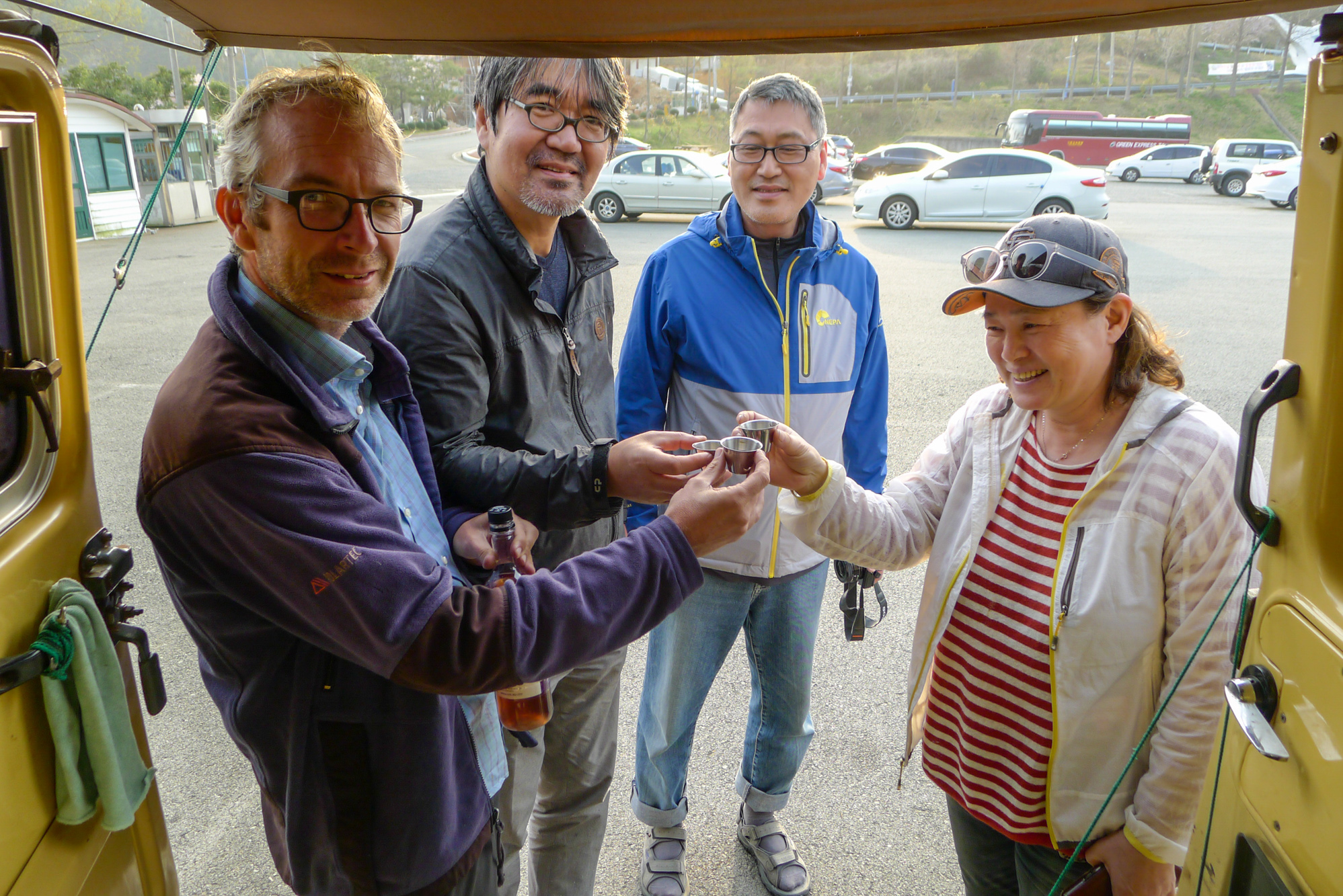
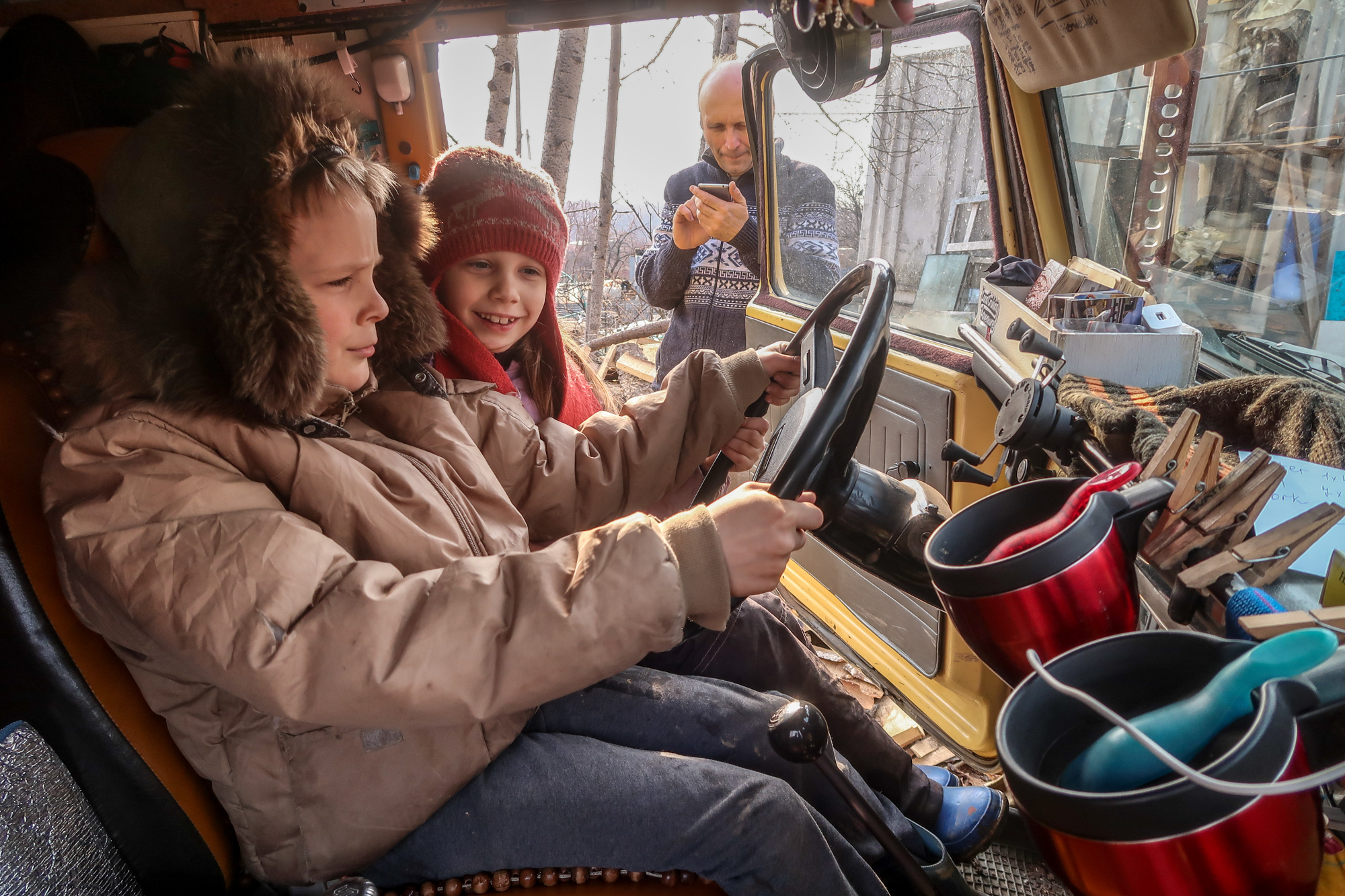
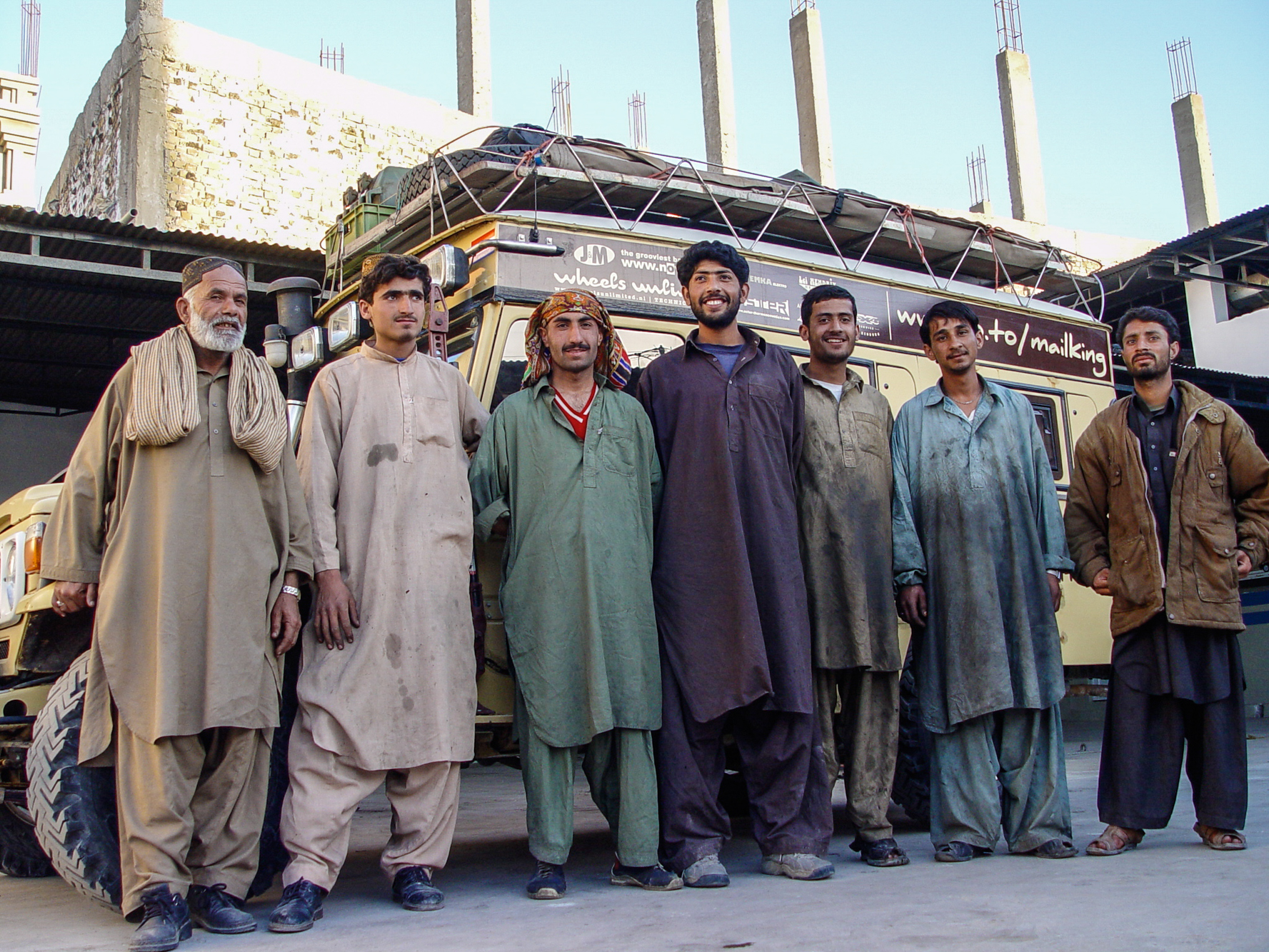
Finding Local Solutions
Before our departure, we had been advised to buy a Land Cruiser from before 1987 because is still entirely mechanical. It could be fixed anywhere—if not with original parts than generic parts might work, or parts that could be duplicated on the spot.
Once on the road, Coen learned car mechanics from scratch, such as in Pakistan, when all a sudden the engine wouldn’t start anymore. He flung wrenches around a couple of times and got it started, but only for so long and we’d be back with a dead engine. Until one day, some local men found us stuck in the desert; they jump-started the Land Cruiser and concluded the batteries needed to be topped up with water. It was as simple as that. In Pakistan, that is, where serviceable batteries are common. Not so in Korea, where they have maintenance-free or sealed batteries. The question where we could top them up left people bewildered. “You buy new ones,” was the response. Finally, we realized any distilled water would do, which was easy to find at a pharmacy.
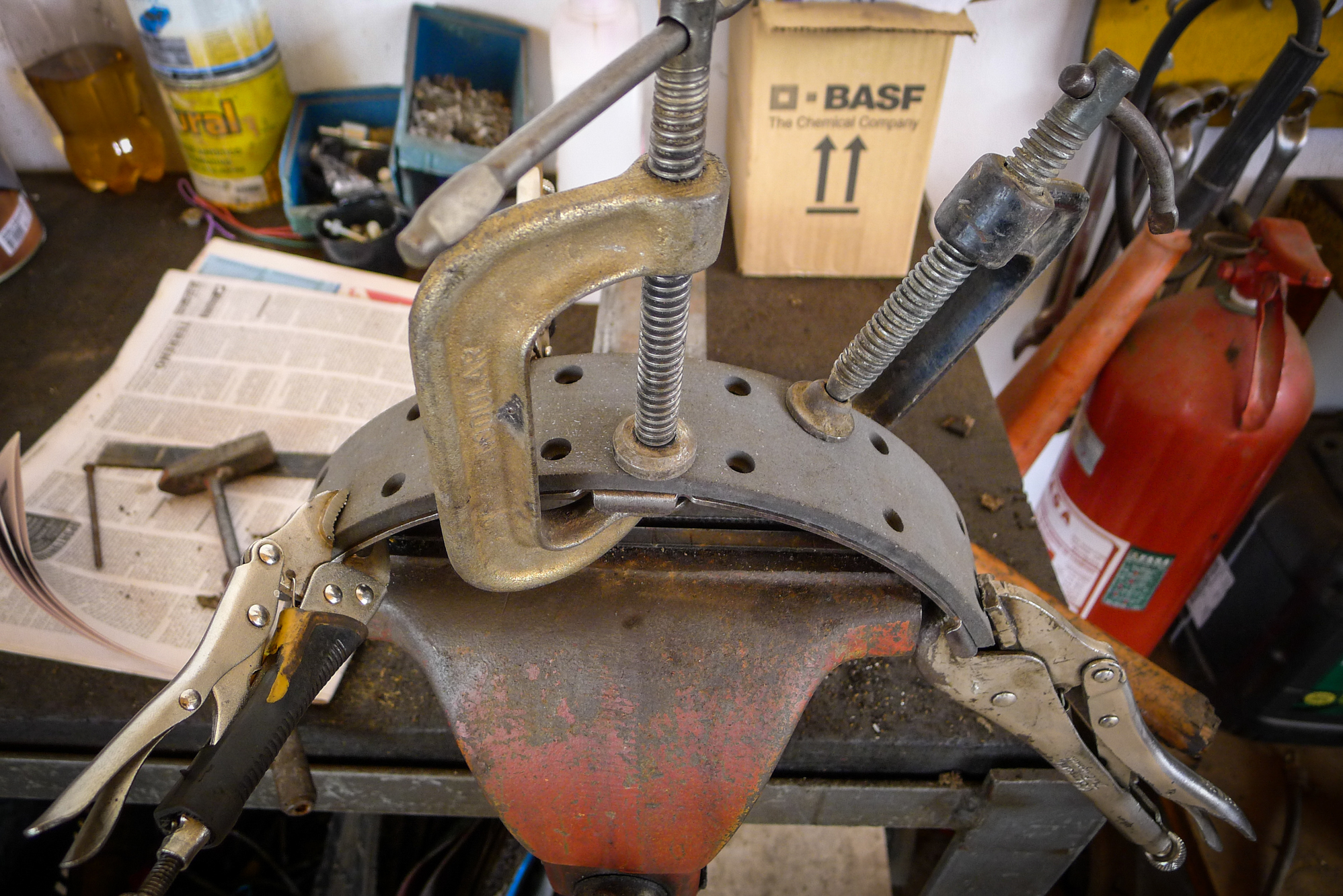
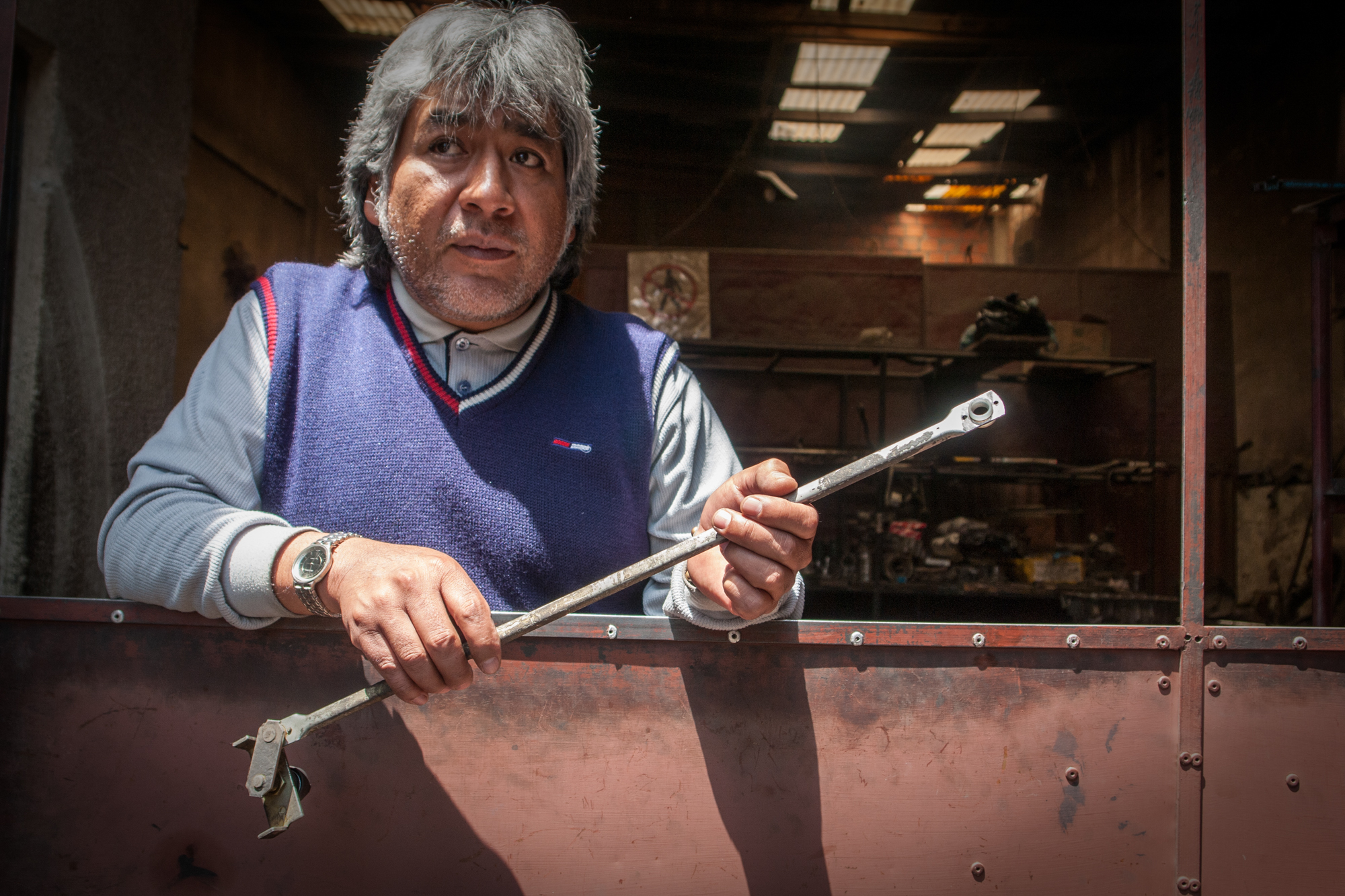
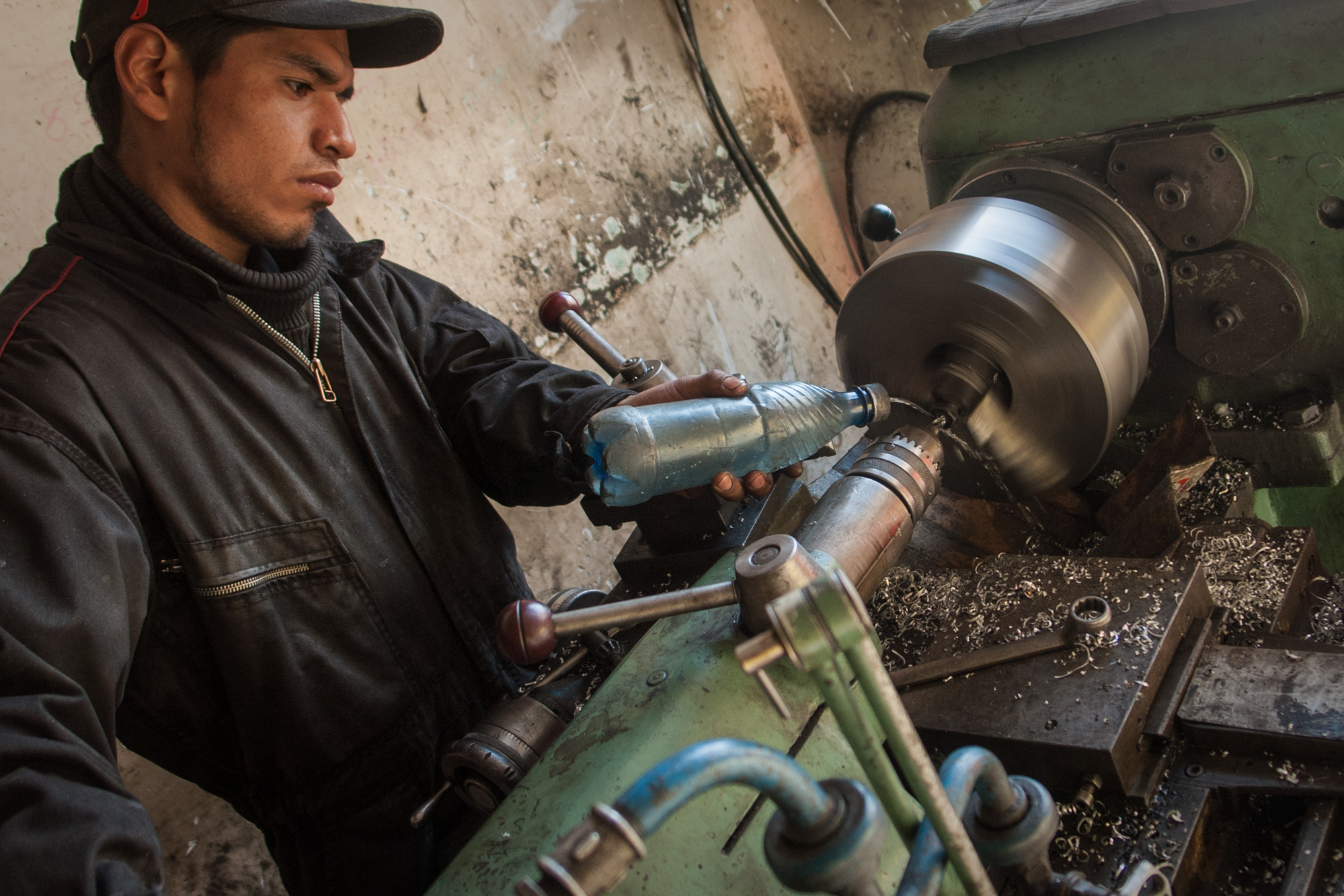
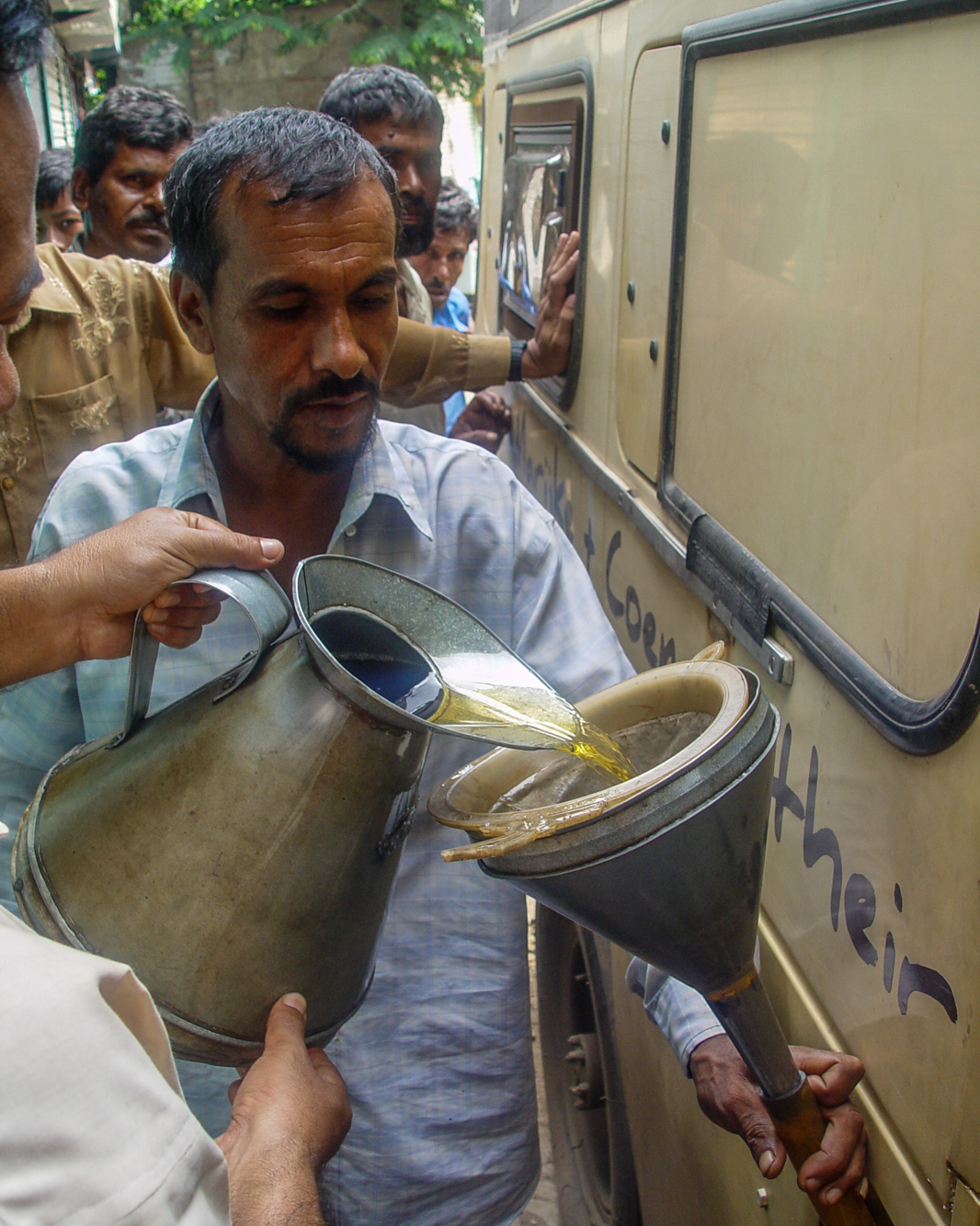
We’ve always found local solutions; not once have we had vital parts shipped from across the world in order to keep the Land Cruiser running. The above-mentioned windshield wiper part broke again and was reproduced in Bolivia eight years ago and is still going strong. In Chile, the engine mounts had been ripped to pieces as a result of our driving the tough, often washboard, unpaved roads in South America. In a workshop in Calama, the mounts were fabricated in a local establishement for little money and lasted many years.

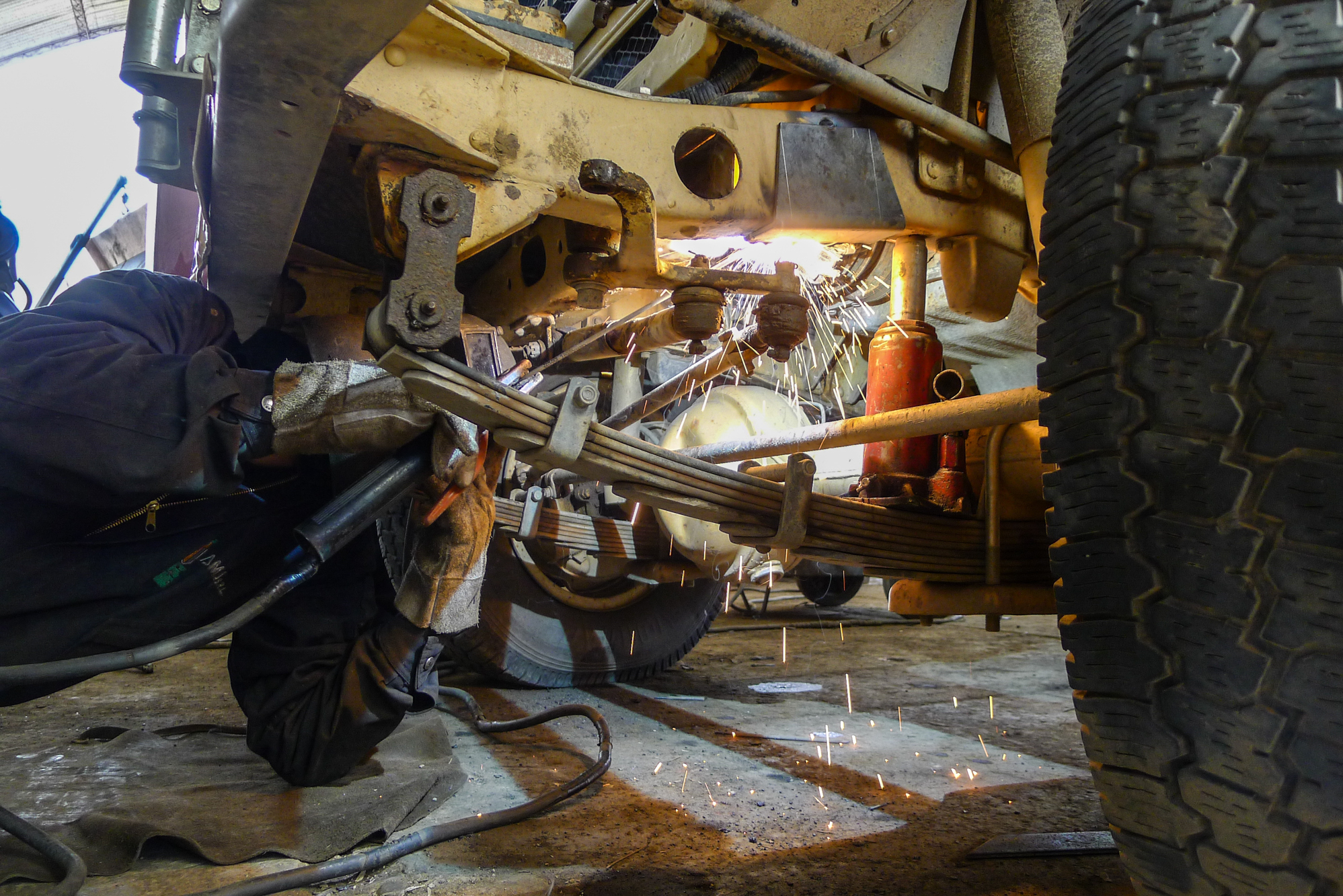
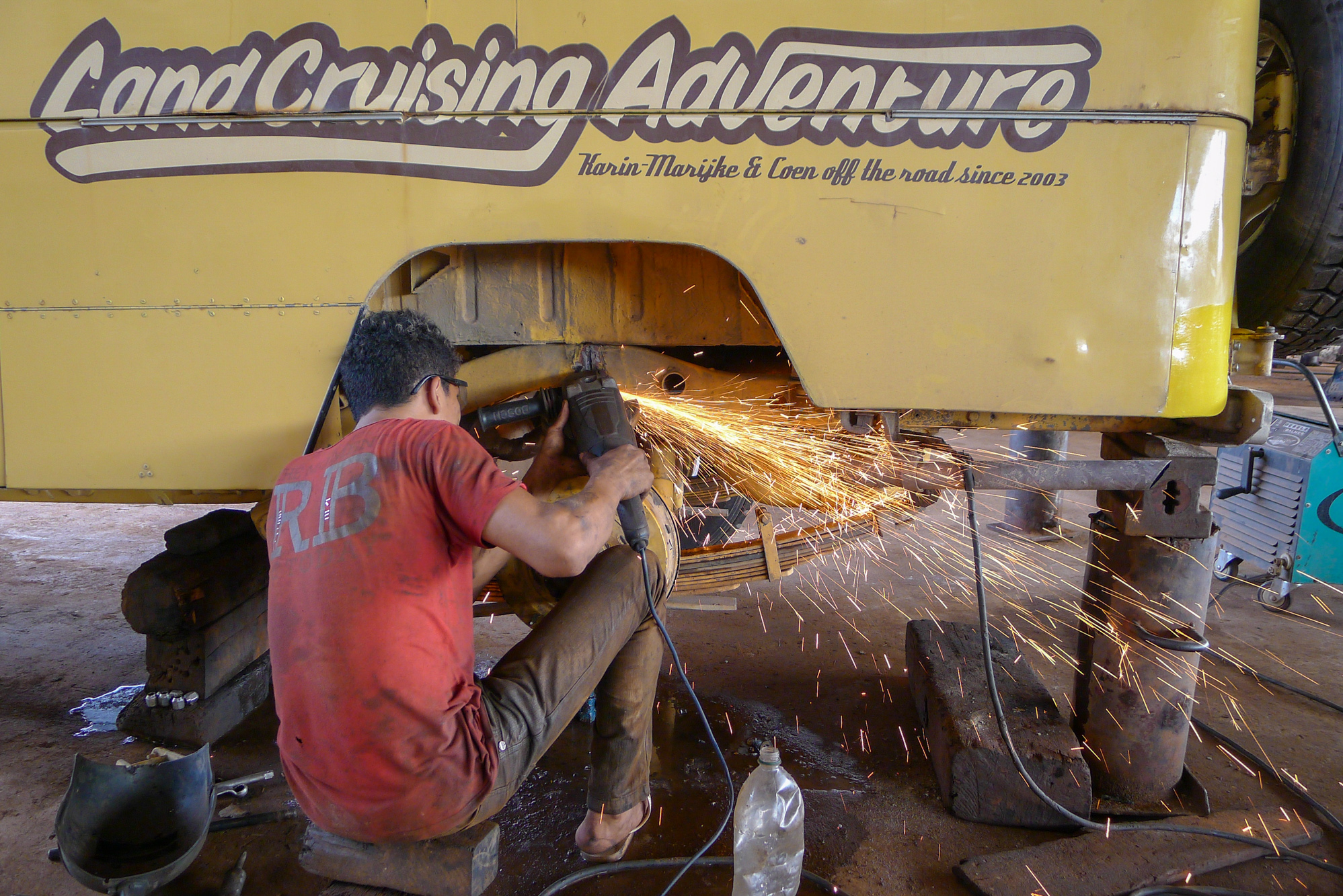
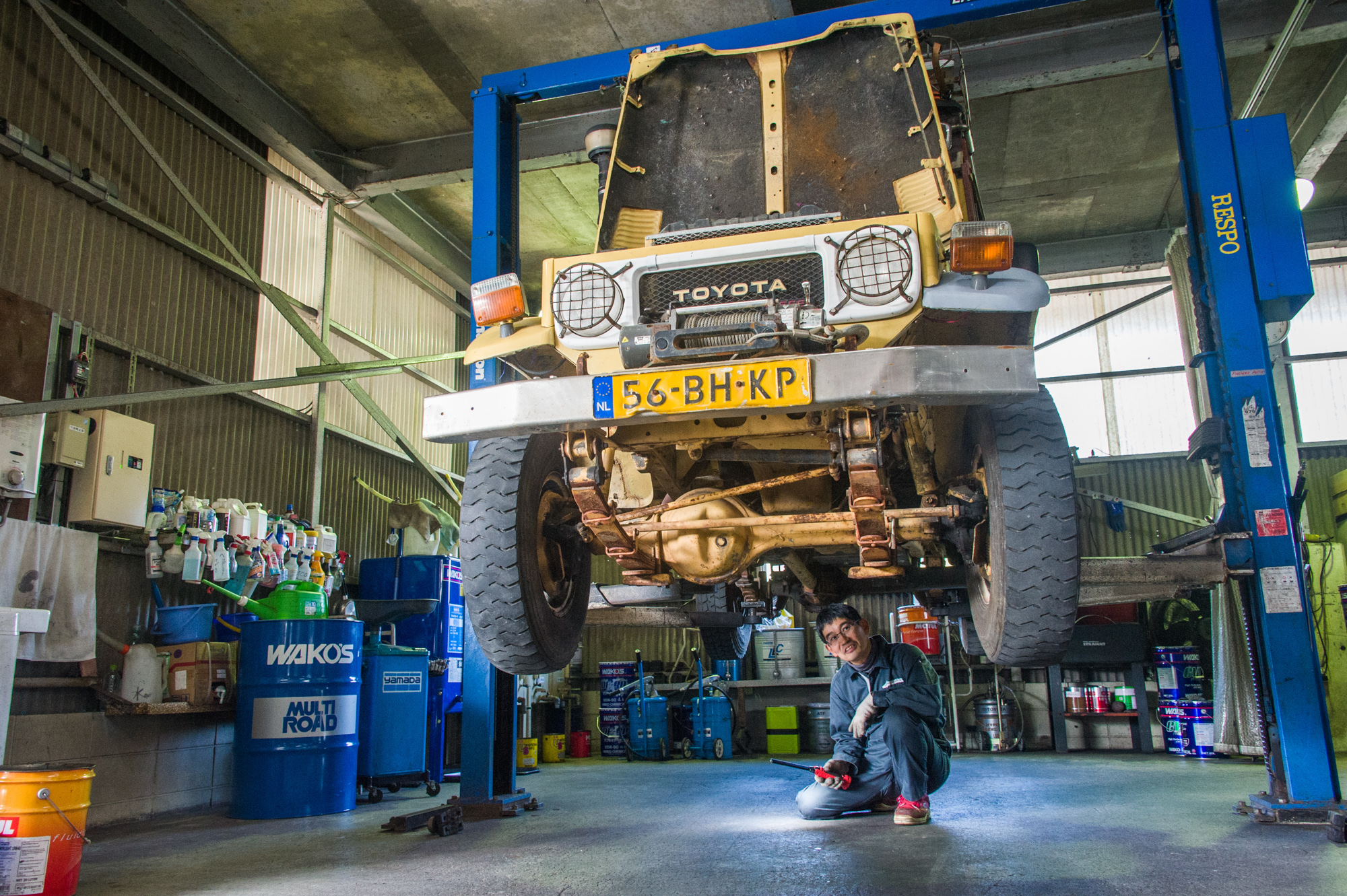
Without a doubt, a modern car is much more comfortable—at least as long as it drives. On the other hand, with an old car like ours, we don’t have fuel issues; it runs on any diesel no matter how bad it is, and it is free of computer-related breakdowns that are hard or impossible to fix in many non-Western countries.
The Gain is Mutual
Throughout our 15 years on the road, we have found generosity around every corner. At the start of our journey, I struggled to accept all this kindness, finding it easier to give than to receive. “We don’t want your money; you give us stories,” has often been the response when we offered to pay or earn our keep in another way. I’ve come to see that, in a way, the gain is mutual. People like what we do. It makes them smile and it gives them confidence, whether it’s getting the confirmation that it is possible to live off the grid (a dream of many), or hearing how beautiful and kind most people in the world are (so contradictory to mainstream media stories). For various reasons, people want to be part of our adventure. They want to keep us and the Land Cruiser on the road, and by giving a helping hand they have done exactly that. We are more than grateful and are looking forward to many more years on the road in our trusty Land Cruiser.
